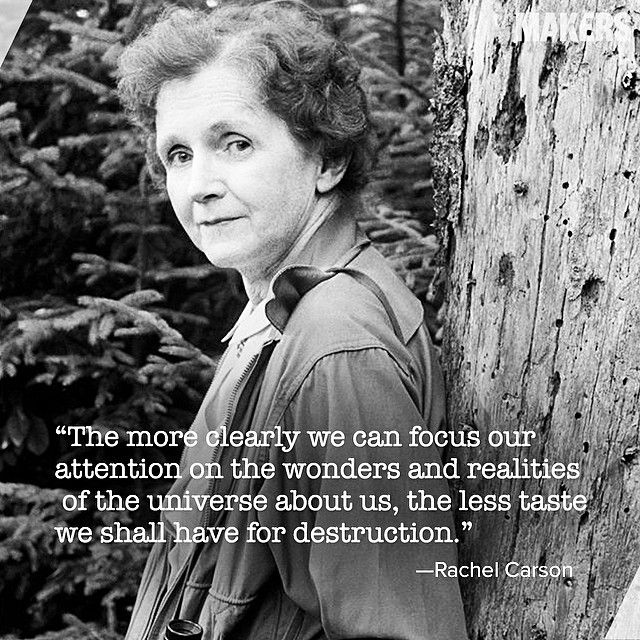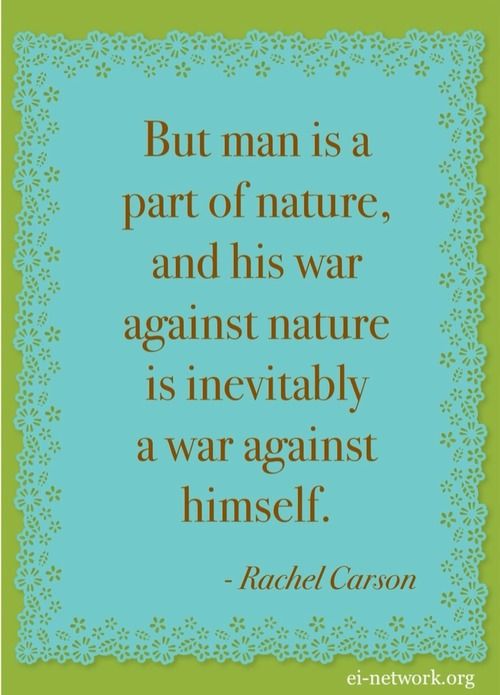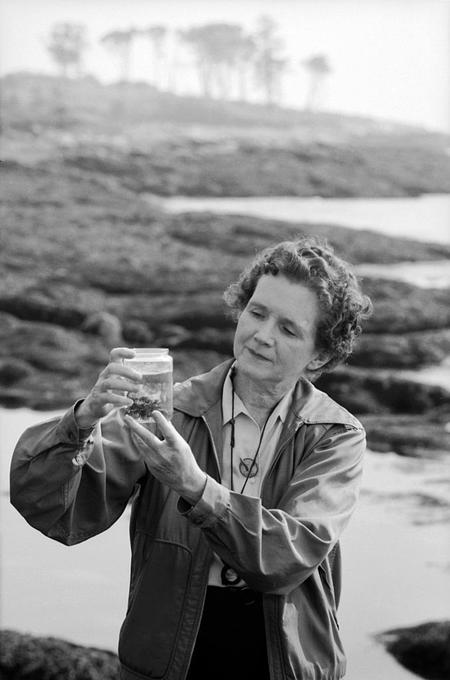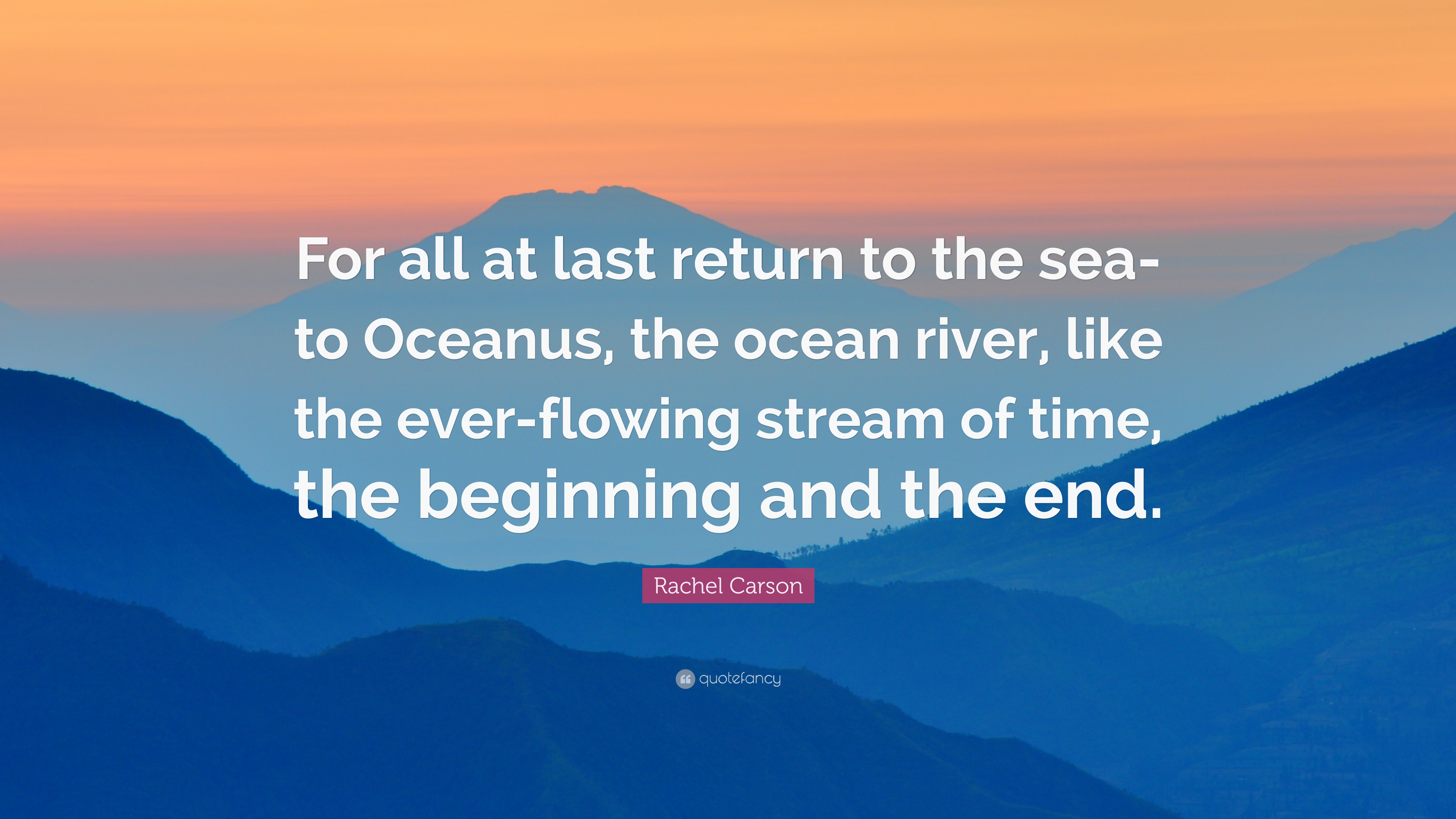
Rachel Carson was born on May 27th, 1907 in Springdale, Pennsylvania. Surprisingly, Carson was not born near an ocean! And why might we say that? Well, Carson would go on to become one of the foremost nature writers and ocean conservationists of the 20th century. However, before her foray into the ecological world, Carson spent her childhood exploring her family’s rural farm. She graduated high school in the neighboring Parnassus, Pennsylvania, at the top of her class.

Carson attended the Pennsylvania College for Women (today known as Chatham University). Though she first declared as an English major (having been an avid reader her whole life), she quickly switched her major to biology. After graduating magna cum laude, Carson began her graduate studies in zoology and genetics at John Hopkins University. In June, 1932, Carson earned her master’s degree in zoology. Though she had planned to continue her education and eventually receive her PhD, the world had other plans. The Great Depression hit her family hard, and Carson was forced to leave school and begin a full-time teaching position to help support them. A couple years later her father died suddenly, putting even more stress on Carson to be the sole caretaker of her mother.
 Carson eventually got a temporary position with the United States Bureau of Fisheries, a job which she had been on the fence about but was persuaded to take by one of her college mentors. She spent her time there writing radio copy for “weekly educational broadcasts entitled Romance Under the Waters.” With 52 programs in the series, Carson had her work cut out for her. The episodes focused on aquatic life and was meant to prompt interest in biology of fish and the work the Bureau did. During this time, Carson’s interest in marine life grew, and soon she was submitting articles on aquatic life in the Chesapeake Bay to local newspapers and magazines. She impressed her superiors with her dedication and knowledge to the point where they offered her the first full-time position that became available, as a junior aquatic biologist.
Carson eventually got a temporary position with the United States Bureau of Fisheries, a job which she had been on the fence about but was persuaded to take by one of her college mentors. She spent her time there writing radio copy for “weekly educational broadcasts entitled Romance Under the Waters.” With 52 programs in the series, Carson had her work cut out for her. The episodes focused on aquatic life and was meant to prompt interest in biology of fish and the work the Bureau did. During this time, Carson’s interest in marine life grew, and soon she was submitting articles on aquatic life in the Chesapeake Bay to local newspapers and magazines. She impressed her superiors with her dedication and knowledge to the point where they offered her the first full-time position that became available, as a junior aquatic biologist.
Carson continued to write, articles and journals, essays and copy – detailing marine life. Her writing career would be changed forever after the publishers at Simon & Schuster saw an article by Carson entitled “Undersea” that had been published in Atlantic Monthly. This journey along the sea floor impressed the publishers so much so that they contacted Carson and implored her to turn the essay into a book… one that they would publish. Carson not only wrote the book, but continued publishing in journals and magazines all over the country at this time.
 Over ten years at the United States Fish and Wildlife Service (as it was by then called) were good to Carson – she had become the chief editor of publications. Years after the first interest shown by publishers, Carson was once again on the book-publishing path. This time, Oxford University Press expressed interest in a life history of the ocean. Her completed work would eventually become The Sea Around Us. Several chapters were published serially in the Yale Review, Science Digest and The New Yorker, until it was finally published as a book in July 1951. It was an immediate bestseller, remaining at the top of the New York Times Bestseller List for 86 weeks straight. This success gave Carson the ability to give up her job at the US Fish and Wildlife Service, and focus on her writing full time.
Over ten years at the United States Fish and Wildlife Service (as it was by then called) were good to Carson – she had become the chief editor of publications. Years after the first interest shown by publishers, Carson was once again on the book-publishing path. This time, Oxford University Press expressed interest in a life history of the ocean. Her completed work would eventually become The Sea Around Us. Several chapters were published serially in the Yale Review, Science Digest and The New Yorker, until it was finally published as a book in July 1951. It was an immediate bestseller, remaining at the top of the New York Times Bestseller List for 86 weeks straight. This success gave Carson the ability to give up her job at the US Fish and Wildlife Service, and focus on her writing full time.
 Her books on the ocean life continuing to be popular, best selling works across the country, Carson began focusing much of her research on pesticide use in the United States, something she had been interested in for over a decade, but finally had the time and space to work on it. By 1957, the USDA was proposing widespread pesticide spraying – to eradicate fire ants and other pests. Carson was suspicious of some of the toxic chemicals they were proposing using, including DDT – a now known carcinogen. She worried what kind of effect the runoff from this activity would have on coastal life, and for good reason. Carson would spend the rest of her life focusing her efforts on conservation, with a great emphasis on “the dangers of pesticide overuse.” In September 1962, Houghton Mifflin published what would become Carson’s best-known book, Silent Spring. This work described in detail the harmful effects of pesticides on the environment, and is credited worldwide with helping begin the modern environmental movement. “Carson was not the first, or the only person to raise concerns about DDT, but her combination of “scientific knowledge and poetic writing” reached a broad audience and helped to focus opposition to DDT use.” She also poetically noted the dangers of human nature on the environment, a verifiable fact . Carson was, truly, ahead of her time. Unfortunately taken from us much too soon (passing away at the age of only 56 after a battle with breast cancer), Rachel Carson will live on with every moment that we choose to put the good of the planet above ease of our lives.
Her books on the ocean life continuing to be popular, best selling works across the country, Carson began focusing much of her research on pesticide use in the United States, something she had been interested in for over a decade, but finally had the time and space to work on it. By 1957, the USDA was proposing widespread pesticide spraying – to eradicate fire ants and other pests. Carson was suspicious of some of the toxic chemicals they were proposing using, including DDT – a now known carcinogen. She worried what kind of effect the runoff from this activity would have on coastal life, and for good reason. Carson would spend the rest of her life focusing her efforts on conservation, with a great emphasis on “the dangers of pesticide overuse.” In September 1962, Houghton Mifflin published what would become Carson’s best-known book, Silent Spring. This work described in detail the harmful effects of pesticides on the environment, and is credited worldwide with helping begin the modern environmental movement. “Carson was not the first, or the only person to raise concerns about DDT, but her combination of “scientific knowledge and poetic writing” reached a broad audience and helped to focus opposition to DDT use.” She also poetically noted the dangers of human nature on the environment, a verifiable fact . Carson was, truly, ahead of her time. Unfortunately taken from us much too soon (passing away at the age of only 56 after a battle with breast cancer), Rachel Carson will live on with every moment that we choose to put the good of the planet above ease of our lives.


